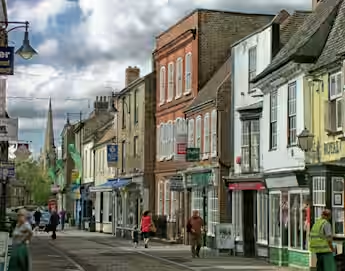Locations
New planning regulations promise greater flexibility for properties to be repurposed as part of the government's Covid-19 recovery strategy.
On 21 July 2020, the UK government laid before Parliament new regulations that will make sweeping changes to the Use Classes Order – hailed as some of the biggest alterations to town centre planning in over 25 years.
The changes represent a complete overhaul of the current Use Classes Order, with the twin aims of:
(a) Better reflecting the increasingly diverse range of uses found on high streets and in town centres; and
(b) Allowing businesses the flexibility to adapt and diversify to meet changing demands.
The measures form part of the government’s plan to level up the country and help the UK recover from the coronavirus (Covid-19) pandemic, captured in the Prime Minister's pledge to “build back better, build back greener, build back faster”, and will be complemented by a scheme to accelerate infrastructure development across the UK
The Town and Country Planning (Use Classes) (Amendment) (England) Regulations 2020 will come into force on 1 September 2020 and provide for three new uses classes:
- Class E (Commercial, business and service);
- Class F.1 (Learning and non-residential institutions); and
- Class F.2 (Local community).
| Use | Use Class up to 31 August 2020 | Use Class from 1 September 2020 |
|---|---|---|
| Shop not more than 280sqm mostly selling essential goods, including food and at least 1km from another similar shop | A1 | E |
| Financial and professional services (not medical) | A2 | E |
| Café or restaurant | A3 | E |
| Pub or drinking establishment | A4 | Sui generis |
| Take away | A5 | Sui generis |
| Office other than a use within Class A2 | B1a | E |
| Research and development of products or processes | B1b | E |
| For any industrial process (which can be carried out in any residential area without causing detriment to the amenity of the area) | B1c | E |
| Industrial | B2 | B2 |
| Storage or distribution | B8 | B8 |
| Hotels, boarding and guest houses | C1 | C1 |
| Residential institutions | C2 | C2 |
| Secure residential institutions | C2a | C2a |
| Dwelling houses | C3 | C3 |
| Use of dwelling houses by 3-6 residents as a 'house in multiple occupation' (HMOs) | C4 | C4 |
| Clinics, health centres, crèches, day nurseries, day centres | D1 | E |
| Schools, non-residential education and training centres, museums, public libraries, public halls, exhibition halls, places of worship, law courts | D1 | F.1 |
| Cinemas, concert halls, bingo halls and dance halls | D2 | Sui generis |
| Gymnasiums, indoor recreations not involving motorised vehicles or firearms | D2 | E |
| Hall or meeting place for the principal use of the local community | D2 | F.2 |
| Indoor or outdoor swimming baths, skating rinks, and outdoor sports or recreations not involving motorised vehicles or firearms | D2 | F.2 |
For further information on these changes and how they are likely to affect future planning developments, contact Fieldfisher planning expert, Dinah Patel.

